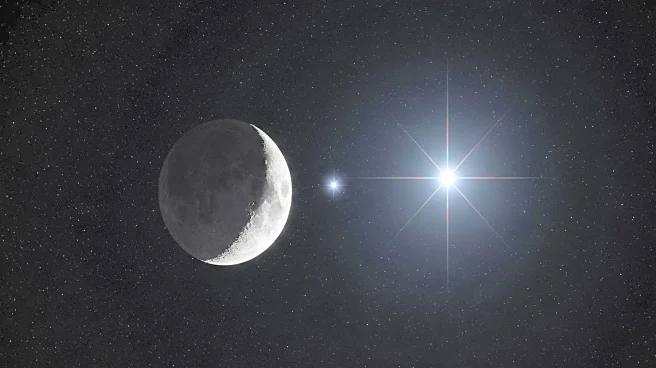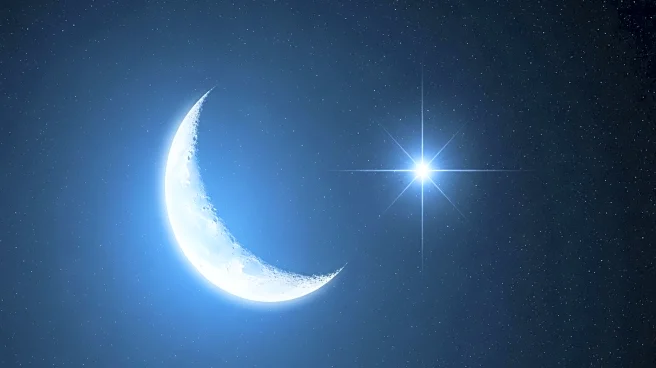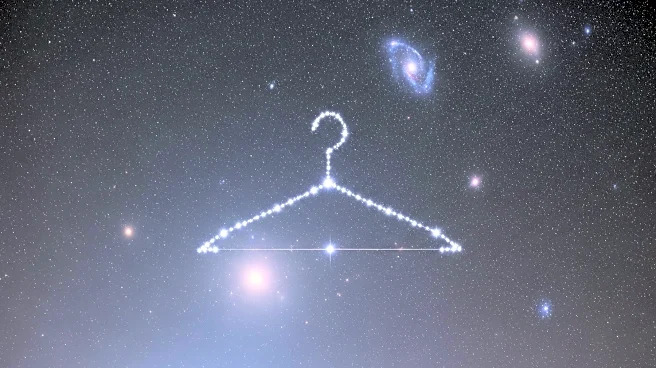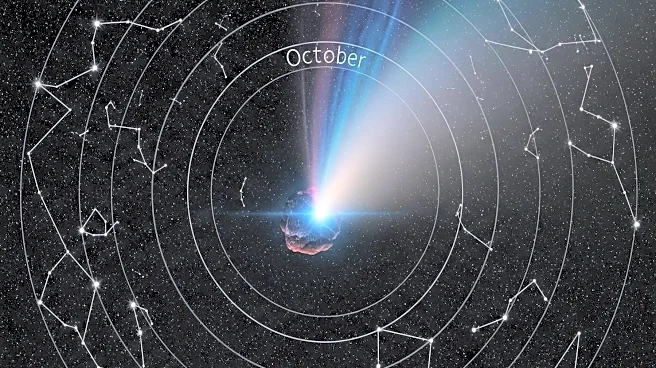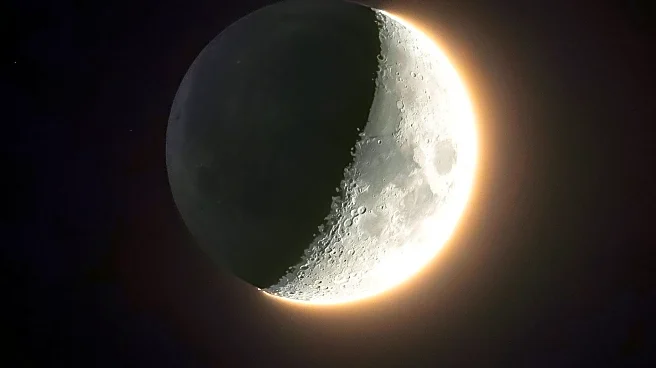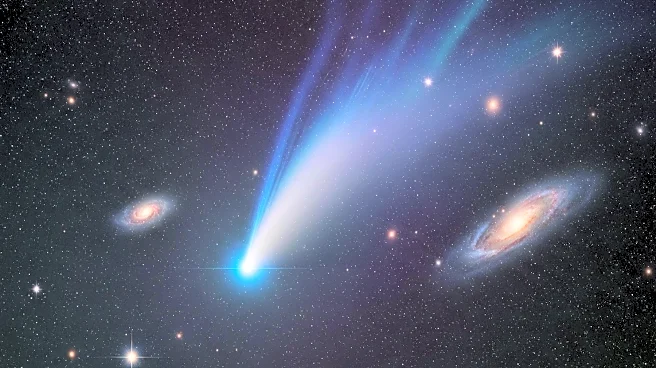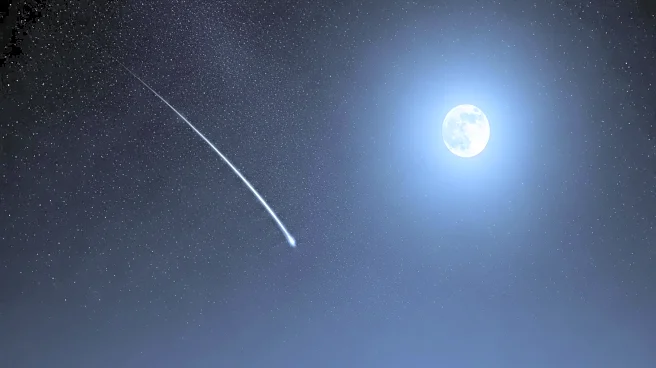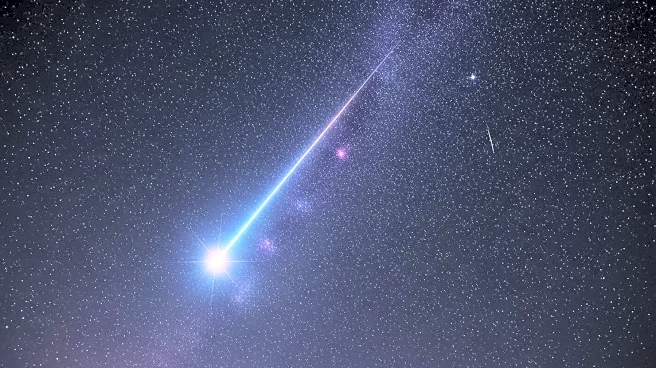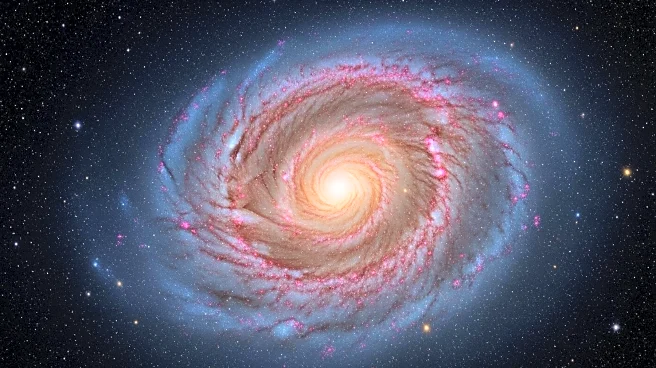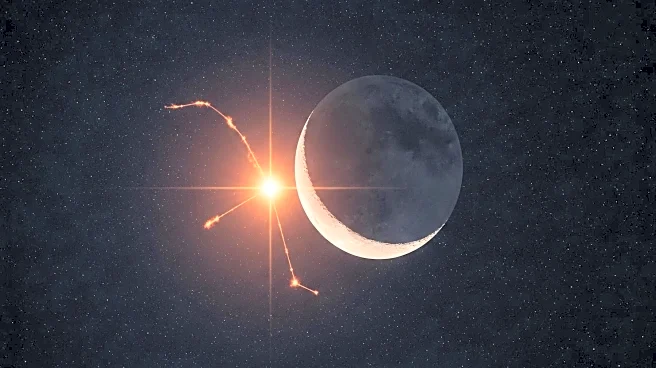What's Happening?
Asteroid Vesta is currently making a notable appearance in the constellation Scorpius, passing near the globular cluster M80. This celestial event is visible in the southwestern sky approximately 30 to 60 minutes after sunset. Vesta, which is at an 8th magnitude, is positioned about 5.5 degrees north of Sigma Scorpii, while M80, slightly brighter at magnitude 7.3, lies between them. The cluster is one of the most densely packed globulars orbiting the Milky Way, containing around 100,000 stars. Observers can locate the event by first finding Antares, the red heart of the Scorpion, and then using binoculars or a telescope to spot the asteroid and cluster.
Why It's Important?
This event provides a rare opportunity for astronomers and sky enthusiasts to observe one of the largest objects in the asteroid belt, Vesta, in close proximity to a significant deep-sky object, M80. Such events are valuable for educational purposes and for increasing public interest in astronomy. The visibility of Vesta near M80 allows for a comparative observation of an asteroid and a globular cluster, enhancing understanding of different celestial bodies. This can inspire amateur astronomers and students to engage more deeply with the study of the night sky.
What's Next?
Observers are encouraged to take advantage of this viewing opportunity as Vesta continues its path through Scorpius. The event is best viewed with clear skies and minimal light pollution. As Vesta moves, it will eventually become less visible as it sinks toward the horizon. Future celestial events can be anticipated by following astronomy calendars and resources that track such occurrences.

